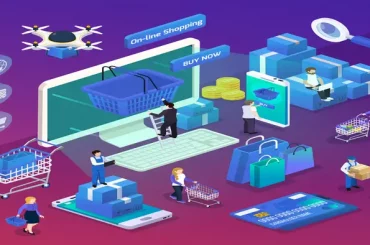How To Migrate Magento to WooCommerce (Adobe Commerce to WooCommerce)
Last Updated | February 7, 2023
Table of Contents
Executive Summary:
With the help of this article, you can easily and rapidly Migrate Magento to WooCommerce.It takes a lot of work to migrate an entire online store. You must make sure your data migration is complete and error-free. Less rebuilding will be necessary the more you can migrate over.
If you want to roll your sleeves up and setup a WooCommerce Store from Scratch, there’s a step-by-step guide on how to setup WooCommerce store.
What Is The Difference Between Magento 1 And 2? And Why Magento 2 Is Better Than Magento 1?
The main distinction between Magento 1 and Magento 2 is that it is still quicker, more user-friendly, and SEO-friendly.
The latest PHP is supported by Magento 2, which increases the site’s overall speed. Compared to Magento 1, it can process more orders per hour and load pages more quickly.
In addition to having cleaner code and a user-friendly UI, Magento 2 also has SEO-enhancing meta tag features. In Magento 1, they were absent.
Here are a few noticeable changes which make Magento 2 better;
- The primary problem with Magento 1 is the performance of the stores, which has been greatly enhanced in Magento 2.
- Compared to Magento 1, Magento 2 offers quicker page loads.
- With Magento 2, plugins permit code to supplement rather than replace core code.
- Magento 2 has an interactive and user-friendly admin panel.
Related Articles:
1) WooCommerce Security
2) Woocommerce Audit
3) WooCommerce features
WooCommerce vs Magento – Which Should You Use?
It will never be simple to select the ideal platform for the future online business because no one platform will precisely meet every user’s needs.
However, by taking a comprehensive look at numerous parts of each platform, you may identify the best one with the characteristics you need for your store.
To speed up WooCommerce checkout process for the WooCommerce store, use the recommendations in this article.
WooCommerce design is user-friendly and provides inexpensive payment options, but Magento costs more and offers users superior performance and security.
WooCommerce development company is more effective for small-scale stores, but Magento works better for large corporations.
As a result of considering all the elements that go into creating a successful online store, we have concluded that WooCommerce is more suitable for growing businesses than Magento.
Since you can’t predict how your store will develop, investing more money upfront in its development is wise in the long term.
Read: 20 advanced ways to optimize and speed up WooCommerce store in 2022
Here are some of WooCommerce’s primary benefits and drawbacks:
-
Benefits
- Suitable for novices and simple to use for people without even any coding or technical knowledge.
- You can customize your design, layout, and formatting thanks to the many customization options available for the WordPress platform.
- There are numerous extensions that can improve the functionalities of your software; they are simple to install, configure, and maintain.
- The core service is free to be using because it is an open-source tool; the cost depends on how many premium plugins you need to add to acquire all the capabilities you desire.
-
Drawbacks
-
- Lack of a specialized customer service department; reliance on a sizable community for development support.
- To manage migration successfully, you must have some familiarity with both platforms.
- To achieve the functionality and speed you desire for your store, you probably need to employ plugins.
- Your site’s speed will be slower and you’ll have more work to do if you have more plugins.
- You will require a skilled eCommerce site developer if you intend to create a solid website.
Reasons Why Choose WooCommerce Over Magento For Your eCommerce Store
The most widely used eCommerce system for online product sales is this one. It uses more than 35% of the internet.
Also Read: Why the Scalability of WooCommerce is So Important?
To manage clients at the enterprise level, Magento 2 was developed. And it costs a lot more than WooCommerce. Additionally, WooCommerce takes lesser time, money, and technical expertise to start up an online store than other platforms.
Learn a little about the WooCommerce conversion rate.
You can launch your store within the allocated spending limit and start serving customers. So here are a few reasons to choose WooCommerce;
- It is open-source and free of cost to use.
- It is based on WordPress, the most widely used content management system.
- It grants total control over store data.
- Through the usage of WooCommerce extensions, other features can be introduced.
- WooCommerce offers incredibly flexible and user-friendly pricing.
- The WooCommerce Digital Wallet System is really simple to set up!
- It offers a community of experts who are always available to support and improve WooCommerce’s functionalities.
- Unless you violate any laws, nobody can freeze your internet store.
- It has an intuitive dashboard. Anyone, whether technical or not, can easily use the admin panel.
- The installation of SEO plugins by the owner will make their website SEO-friendly.
Step-By-Step Guide On How To Migrate Magento To WooCommerce
Also Read: How Many Products Can WooCommerce Handle?
You need to take a few steps before you migrate Magento to WooCommerce. These steps are:
-
The Pre-requisites of Migrate Magento To WooCommerce
- You need managed WordPress hosting.
- Domain name.
- Install WordPress & WooCommerce.
- Install WooCommerce extensions.
Here are the methods you can use to migrate Magento To WooCommerce.
Any of the aforementioned techniques can be used to execute a complete migration to WooCommerce without affecting your current Magento data decide which one is best suited for your needs.
-
Using Third-Party Tools
There are several extensions that can be used to automate your migration process. If you’re not a technical person and are scared that you might damage your sensitive data, then you can choose to automate the migration process. The Magento to WooCommerce migration plugins, you can use are:
- FG Magento To WooCommerce
- Cart2Cart
- Litextension
With the use of these tools, you can easily convert all the relevant data, including items, orders, clients, and user-generated content.
The cost to migrate Magento To WooCommerce depends on how much data you wish to move to utilize these extensions.
-
The Manual Approach
Use the manual approach to migrate Magento and WooCommerce. The manual migration process is easy to understand, simple, and pocket-friendly as well.
-
Exporting Data
- Go to the Magento admin panel and click System > Data Transfer > Export.
- Using the drop-down menu Export Settings section, set entity type, like Products, Customers Main File, Customers Addresses.
- Now, download the CSV file.
- Enable the checkbox throughout Fields Enclosure from Export Settings.
- To filter the exported data based on your entity value:
- Enter the attribute label in the Filter column to export from Magento.
- Enable the checkbox Exclude Present at the start of each row to eliminate an attribute from the export list.
Scroll down and click on Continue.
Look in your download folder for exported files. Save and open your CSV file as a spreadsheet. If necessary, modify your data, and then import it into your WooCommerce store.
-
Importing Data
- Open the WordPress admin panel. Go to WooCommerce > Products.
- Go to the Import button, and click on it for Product CSV Importer.
- Click Choose File and browse the CSV file to import and click the Continue.
- Go to Column Mapping Screen on the next page. WooCommerce automatically maps the column name of the Magento CSV file to WooCommerce product fields.
- Click on the Run the Importer button. Wait until it finishes.
- Repeat the process to migrate customers and orders.
The process helps you can migrate Magento to WooCommerce without consulting any developer or agency.
However, You can also get in touch with Folio3, for our Woo developers and leave the migration from Magento to WooCommerce to us! You can go and relax after handing up your WooCommerce B2B Solution.
We’re renowned for excellent eCommerce platforms; such as BigCommerce web design company, and Salesforce Commerce Cloud development, services.
Folio3 provides the best WooCommerce development and Headless BigCommerce Development services to all types of retailers!
And work on the WooCommerce Salesforce Commerce Cloud as well. Developer cost will depend on the size of data you want to migrate from Magento to WooCommerce.
There’s a step-by-step guide on How to add product image in woocommerce programmatically.
Final Words
This is the eCommerce platform that is most frequently utilized for online product sales. More than 35% of the internet is used by it.
Magento 2 was designed to monitor customers at the enterprise level. And it is much more expensive than WooCommerce.
Additionally, compared to other platforms, WooCommerce requires less time, money, and technical know-how to get an online store up and running.
So considering all this and what was stated throughout the blog, we recommend that WooCommerce integration is a better choice to get migrated on than wasting time, money, and efforts getting on the magneto 2 bandwagon.
So, when do you want to migrate Magento to WooCommerce?
FAQs
What are the challenges you may face with Magento 2 Migration?
Magento 2 is without a doubt much superior and more optimized than Magento 1. You receive more native built-in features, capabilities, possibilities for customization, customer support, and much more! However, it is easier said than done. The challenges you may face while migrating to Magento 2 are;
- Migration from Magento 2 is rigid and complicated.
- Your Magento 1 extensions and themes cannot be migrated, you have to buy them again.
- It’s like relaunching your online store when you migrate from Magento 1.
- For a polished appearance, you must install themes, buy extensions, and work with a developer.
- It takes too long, is too technical, and is too complicated to migrate to Magento 2.
It is a whole re-platforming need, therefore you can use any other eCommerce platform or use Magento 2 to build your online store!
What are the pros and cons of migrating to Magento 2?
- Pros
- Advanced features to address issues.
- Magento 2 can manages size-inclusive stores.
- Customers also get assistance.
- The Magento 2 is built on PHP to protect against data breaches.
- Native extensions are added to Magento 1 that were lacking.
- Cons
- The cost of Magento store expansion, upkeep, and customization has increased.
- The data that needs to be transferred to Magento 2 must be purchased.
- Very technical for users to understand.
- It is difficult, time-consuming, and expensive.
Which one is best for eCommerce WooCommerce or Magento?
Although Magento costs more and gives users better performance and security, WooCommerce’s design is user-friendly and offers affordable payment choices.
WooCommerce development is more efficient for small-scale retailers, whereas Magento is more efficient for big businesses.
We came to the conclusion that WooCommerce is more suited for expanding businesses than Magento after taking into account all the components that go into building a successful online store.
Since you can’t foresee how your store will grow, it makes sense, in the long run, to invest more money upfront in its development.













